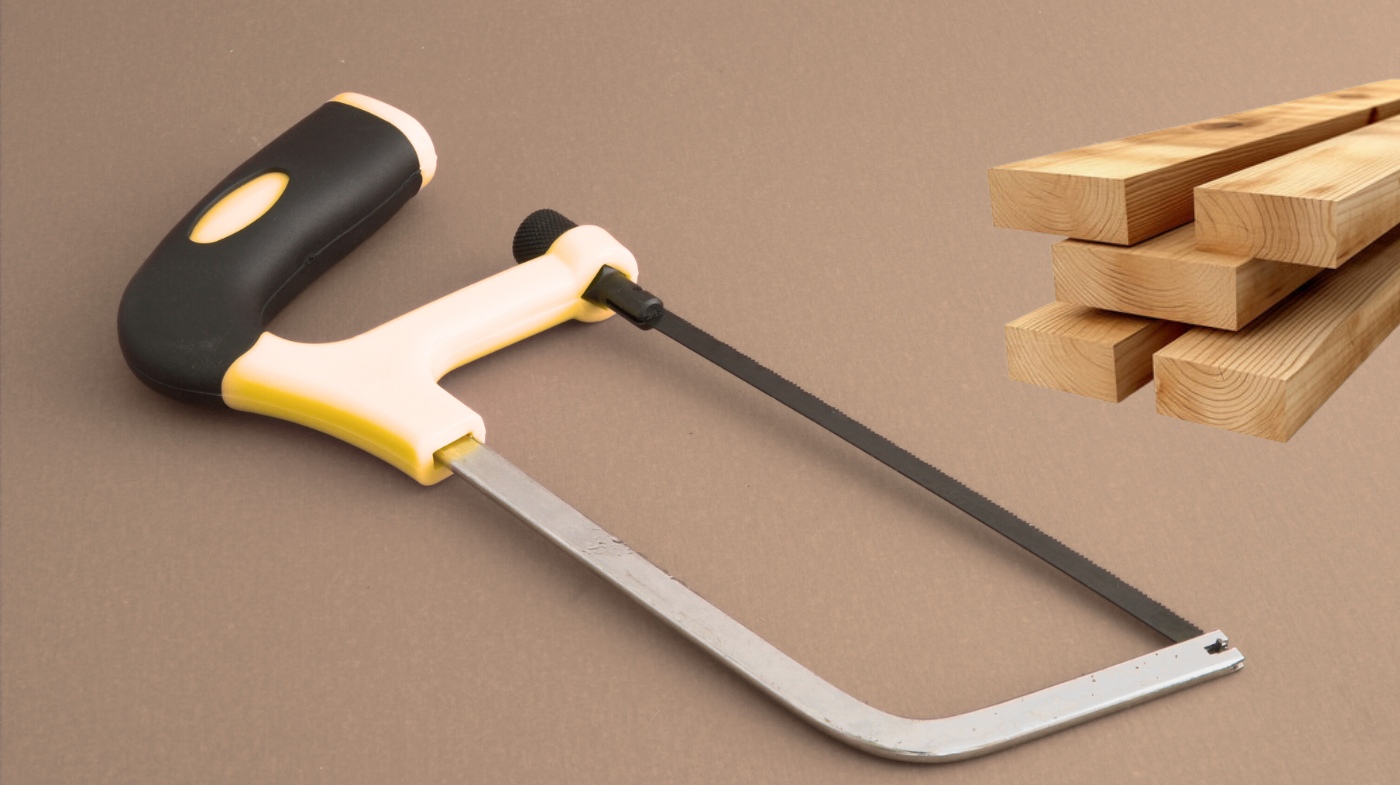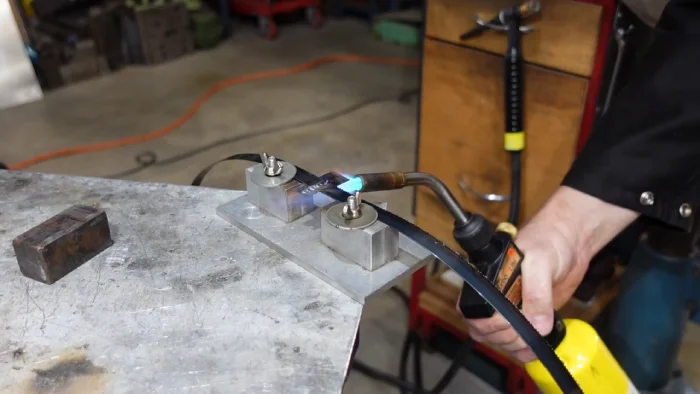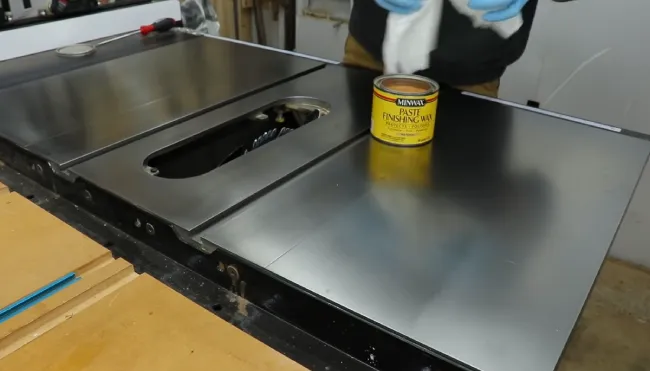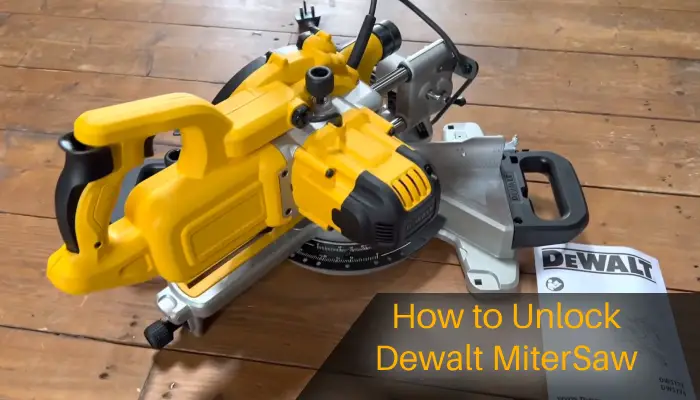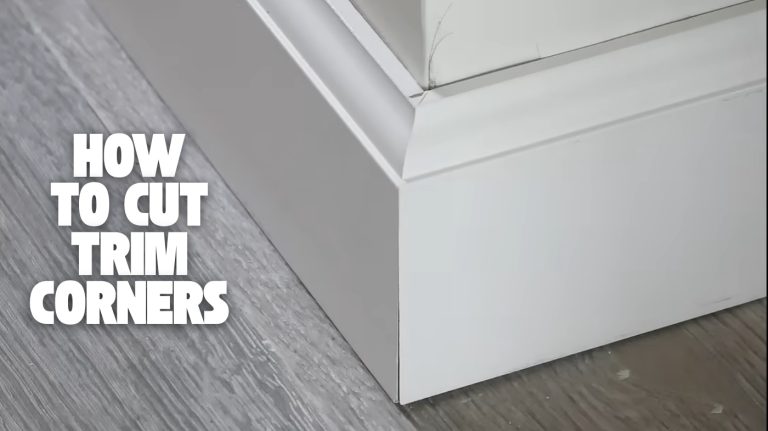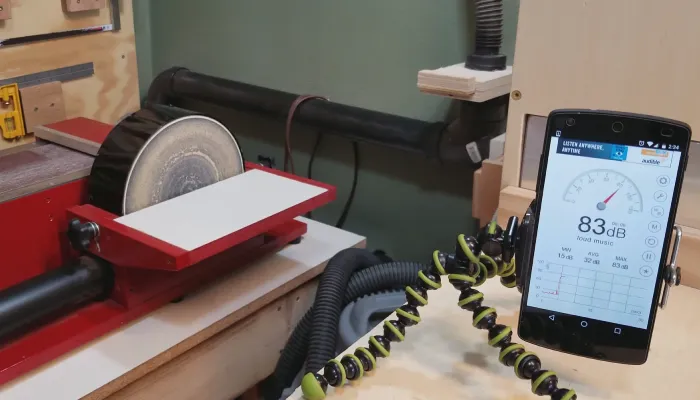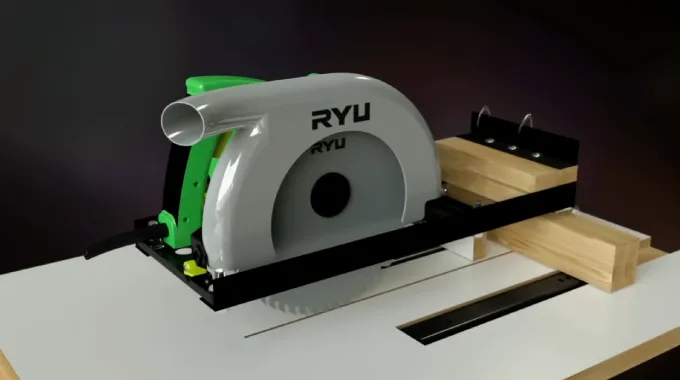Can a Hacksaw Cut Wood? Things You Need to Know First
You can use a hacksaw to cut wood, but its fine, metal-oriented blade won’t give you fast, clean cuts like wood saws do. Hacksaw blades tend to clog and dull quickly on wood, and their thin frame limits maneuverability.
For small, thin wood pieces, a hacksaw might work, especially in tight spaces, but it’s not ideal for larger woodworking. If you want to understand when a hacksaw is practical and how to improve its use, keep exploring these details.
Key Takeaways
- Hacksaws can cut wood but are best suited for small, thin pieces or dowels due to their fine-toothed blades designed for metal.
- Using a coarse-toothed carbon steel hacksaw blade improves wood cutting speed and reduces clogging compared to standard metal blades.
- Hacksaw blades may bend or produce rough cuts on wood since their tooth geometry is optimized for metal cutting.
- Stability with clamps and steady blade tension enhances cutting accuracy when using a hacksaw on wood.
- For larger or cleaner wood cuts, wood-specific saws like panel saws or jigsaws are more efficient than hacksaws.
Understanding the Design and Purpose of Hacksaws
The hacksaw is engineered specifically to cut through metal, plastic, and composite materials where conventional wood saws fall short. You’ll notice it uses a thin, fine-toothed blade held taut by a C- or D-shaped steel or aluminum frame. This frame balances strength and weight, ensuring blade stability without causing fatigue during use.
Adjust the blade tension with screws or wingnuts to fit different blade lengths and maintain cutting precision. The frame is typically made of steel or aluminum, providing a sturdy yet lightweight structure.
The ergonomic pistol-grip handle improves control and comfort, especially during repetitive cuts. Blades mount with teeth oriented forward or backward, depending on your cutting needs, and are secured at both ends to prevent bending.
This design makes hacksaws ideal for metal pipes, plastic tubing, and rebar, but not primarily for wood cutting.
Blade Characteristics and Their Impact on Cutting Wood
When choosing a hacksaw blade for cutting wood, you must consider key characteristics like tooth pitch, material, and design. These directly affect cutting efficiency and quality.
Hacksaw blades usually have higher TPI (14-32), optimized for metal, which slows wood cutting and risks clogging. Carbon steel blades with lower TPI (6-8) are better for wood, offering coarser teeth that remove wood chips faster but yield rougher cuts.
For example, carbon regular blades are ideal for cutting wood, providing the appropriate tooth design for softer materials. Unlike band saws, which use a continuous loop blade for smooth cuts, hacksaws rely on manual back-and-forth motion.
Blade flexibility also matters. Carbon steel resists breakage better than hard, brittle high-speed steel. Additionally, hacksaw tooth sets are less aggressive than wood saws, limiting chip clearance and cutting speed.
Focus on these three factors for efficient wood cutting:
Prioritize low TPI, flexible carbon steel, and wood-friendly tooth geometry for optimal hacksaw wood cutting.
- Select blades with lower TPI for faster chip removal.
- Use flexible carbon steel blades to reduce breakage.
- Prefer blades with tooth geometry suited for softer materials. This approach contrasts with the blade types and cutting abilities of band saws and circular saws, which are designed for specific materials and cut types.
Challenges of Using a Hacksaw on Wood Materials
Understanding the blade characteristics helps, but using a hacksaw on wood still presents specific challenges you need to address. The thin, flexible blades can bend or warp under lateral pressure, compromising cut accuracy.
The tooth geometry, optimized for metal, causes rough cuts and demands more effort to maintain a straight line. Additionally, friction between the blade and wood fibers generates heat, risking blade temper loss if not lubricated.
You’ll also face limited maneuverability; the rigid frame and blade length restrict cutting in tight spaces or curves. Wood’s abrasive compounds dull metal-cutting blades rapidly, requiring frequent inspection and replacement.
Without stable clamping, blade wobble worsens cut quality. Using two small C-clamps on the saw blade can help stop the saw from cutting all the way through the wood, improving control during cutting clamp technique.
These factors mean hacksaws are less efficient and precise on wood compared to saws designed specifically for woodworking.
Comparing Hacksaws to Wood-Specific Saws
Although a hacksaw can cut wood, you’ll quickly notice its design contrasts sharply with wood-specific saws in blade structure, material suitability, and ergonomics.
Hacksaw blades are thin, fine-toothed, optimized for metals, while wood saws have thicker blades with fewer, larger teeth designed to efficiently slice wood grain.
Handles differ: hacksaws have tension-focused grips, while wood saws favor ergonomic designs for forceful, extended strokes.
When comparing these saws, consider:
- Blade Design: Hacksaws have high TPI for metal; wood saws have lower, larger teeth for tearing wood fibers.
- Material Suitability: Hacksaws cut hard materials slowly; wood saws cut wood faster and cleaner.
- Ergonomics: Wood saw handles support wrist motion for cutting wood; hacksaw handles prioritize blade tension control.
This makes wood saws inherently superior for cutting wood. Additionally, wood saws often incorporate ergonomic features that enhance comfort and control during extended use.
Practical Scenarios Where a Hacksaw Might Cut Wood
While hacksaws aren’t optimized for wood cutting due to their fine-toothed blades and tension-focused frames, they can still serve practical purposes in specific scenarios.
You can use a hacksaw effectively on small, thin wooden pieces or dowels, especially when precision isn’t critical and woodworking saws aren’t available. The adjustable frame of a hacksaw allows it to hold blades securely for a variety of cutting tasks.
Mini or junior hacksaws excel in confined spaces where larger saws won’t fit, allowing localized cuts on embedded wooden parts within metal or plastic assemblies.
Plumbers often use hacksaws to cut plastic pipes with wooden cores, demonstrating the tool’s versatility.
Additionally, power hacksaws adapted for mixed materials can handle wood sections embedded in metal or plastic.
In these cases, cutting wood is typically incidental to the primary task of cutting metal or plastic, making the hacksaw a practical, if specialized, option.
Maintenance and Blade Wear When Cutting Wood
When you grab a metal hacksaw blade to cut wood, be ready for some quick wear and tear. It’s pretty common to see clogging and friction ramping up, which isn’t great for the blade’s lifespan. Using blades that are not designed for wood can lead to faster dulling and potential damage due to improper blade type.
So, don’t forget to check the blade regularly for any signs of damage. Cleaning off that pesky sawdust buildup is super important, too; it really helps keep your cutting efficiency in check.
And hey, let’s not overlook the importance of proper tensioning and technique! These factors can make a big difference in how long your blade lasts while cutting through wood. Additionally, regular maintenance such as lubrication and rust removal can significantly extend the blade’s usability.
Increased Blade Wear
Since wood often contains abrasive particles and occasional embedded materials like nails or grit, cutting it with a hacksaw can greatly accelerate blade wear.
The fibrous nature of wood combined with silica content increases abrasion, dulling metal-optimized blades faster.
Fine teeth designed for metal clog easily when cutting wood, causing rapid dulling and potential chipping.
To mitigate accelerated wear, keep these points in mind:
- Inspect wood thoroughly to avoid hidden debris that damages teeth.
- Use blades designed for wood or multi-material cutting for better wear resistance.
- Apply light lubrication to reduce friction and heat buildup during sawing.
Additionally, blade sharpness and type can significantly affect cutting efficiency and blade longevity. Failing to address these factors leads to increased blade replacement frequency and compromised cutting efficiency.
Maintenance Challenges
Although hacksaws are primarily designed for metal, you’ll face specific maintenance challenges when using them on wood. Wooden handles need regular lubrication with boiled linseed oil to prevent drying and cracking. You must check for looseness that affects control.
The frame’s tension mechanisms require frequent inspection to keep the blade taut, avoiding bending and inefficient cuts.
Wood dust and sap accumulate on handles and frames, so periodic cleaning is essential.
Blade wear accelerates due to increased friction and heat; inspect blades often for warping or tooth damage.
Cleaning embedded sawdust and replacing or sharpening blades frequently will maintain cutting precision. Using blades designed for wood or combined tooth configurations can reduce maintenance demands and improve performance. Proper clamping and gentle cutting strokes also minimize wear and prolong tool life.
Tips for Improving Hacksaw Performance on Wood
Mastering a few essential tips can greatly enhance your hacksaw’s performance on wood. Start by selecting a coarse-toothed blade designed for softer materials, ensuring the teeth face forward to cut on the push stroke.
Maintain steady tension and replace dull blades promptly to avoid clogging and rough cuts. Stabilize your workpiece with clamps or a vise, and mark precise cut lines with a sharp knife or pencil to improve accuracy, as demonstrated in traditional marking and scoring techniques.
Focus on cutting technique by:
- Beginning with light, controlled strokes to form a guiding groove.
- Keeping the saw at a consistent 90-degree angle for accuracy.
- Using short, even strokes without forcing the blade to prevent binding.
Regularly clear sawdust to maintain blade efficiency and consider lubricating the blade when cutting dense wood.
Recommended Tools for Efficient Wood Cutting
Choosing the right tools greatly impacts the efficiency and quality of your wood cutting projects.
For straight, rip, and crosscuts on large wood pieces, a circular saw offers versatility and speed. However, for breaking down large sheets with enhanced control, a panel saw might be more efficient.
When precision and repeated rip cuts are necessary, rely on a table saw.
For angled or miter cuts, a miter saw delivers clean, accurate bevels.
If your project demands curves or intricate shapes, use a jigsaw or coping saw.
Hand saws like rip saws and crosscut saws excel in grain-specific cuts, while back saws assist in precise joinery.
Avoid hacksaws for wood due to their fine teeth and slow cutting. Additionally, understanding the types of hand saws helps in selecting the best tool for your specific woodworking needs.
Always maintain sharp blades and choose tool types matching your wood and cut style to maximize quality and safety.
Frequently Asked Questions
Can a Hacksaw Blade Be Sharpened for Better Wood Cutting?
Yes, you can sharpen a hacksaw blade for better wood cutting by filing, setting, jointing, and stoning the teeth carefully.
However, due to the fine tooth pitch and original design for metal, achieving effective wood cutting is challenging.
You’ll need precision and proper tools to modify tooth set and profile.
Even then, the blade won’t match specialized wood saws.
It’s generally more practical to use blades designed specifically for wood.
Are There Hacksaw Blades Designed Specifically for Woodworking?
Oh, absolutely, because nothing screams “woodworking pro” like a hacksaw blade!
Yes, there are hacksaw blades crafted specifically for cutting wood.
These blades feature fewer teeth per inch, sharp high-speed steel teeth, and optimized tooth geometry to slice through wood fibers efficiently.
You’ll find 12-inch blades designed for clean cuts without splintering, perfect for fitting standard hacksaw frames.
Choose the right TPI for your project, and you’re good to go.
How Does Blade Tension Affect Cutting Wood With a Hacksaw?
Blade tension directly impacts your hacksaw’s cutting precision and efficiency. When you apply proper tension, the blade stays straight, resisting bending and vibration. This keeps your cuts accurate and smooth.
Too little tension causes blade deflection and chatter, increasing effort and dulling the blade faster.
Over-tension risks damage, so adjust carefully using the wing nut or lever. This helps to balance rigidity and flexibility for peak wood cutting performance.
Can a Hacksaw Safely Cut Treated or Painted Wood?
Yes, you can safely cut treated or painted wood with a hacksaw if you choose blades designed for wood and chemical resistance.
Always wear eye protection, gloves, and a respirator to avoid hazardous dust inhalation.
Secure the wood firmly and cut with smooth, controlled strokes.
Be mindful that treated wood can dull blades quickly and generate toxic dust.
Is It Possible to Use a Hacksaw for Detailed Wood Carving?
You can use a hacksaw for detailed wood carving, but it’s not ideal. Its fine, rigid blade allows precise, straight cuts but limits maneuverability for intricate shapes.
The blade’s brittleness raises breakage risk during complex cuts, and the tooth profile isn’t optimized for wood grain or carving fluidity.
For better control and efficiency, specialized tools like coping saws or carving chisels are more practical choices.
Upgrade Your Cutting Experience with the Right Saw
While a hacksaw can cut wood, it’s like using a spoon to chop a tree. It’s possible but inefficient. Its blade design and tooth configuration aren’t optimized for wood, leading to slow progress and rapid blade wear.
For precise, clean cuts, you’ll want a saw designed specifically for wood. However, in a pinch, a hacksaw can handle small tasks. Just remember to maintain your blade and adjust your technique to get the best results.

